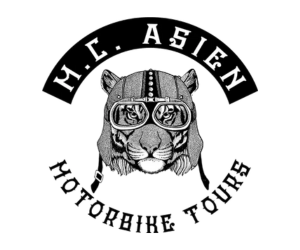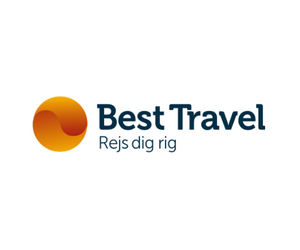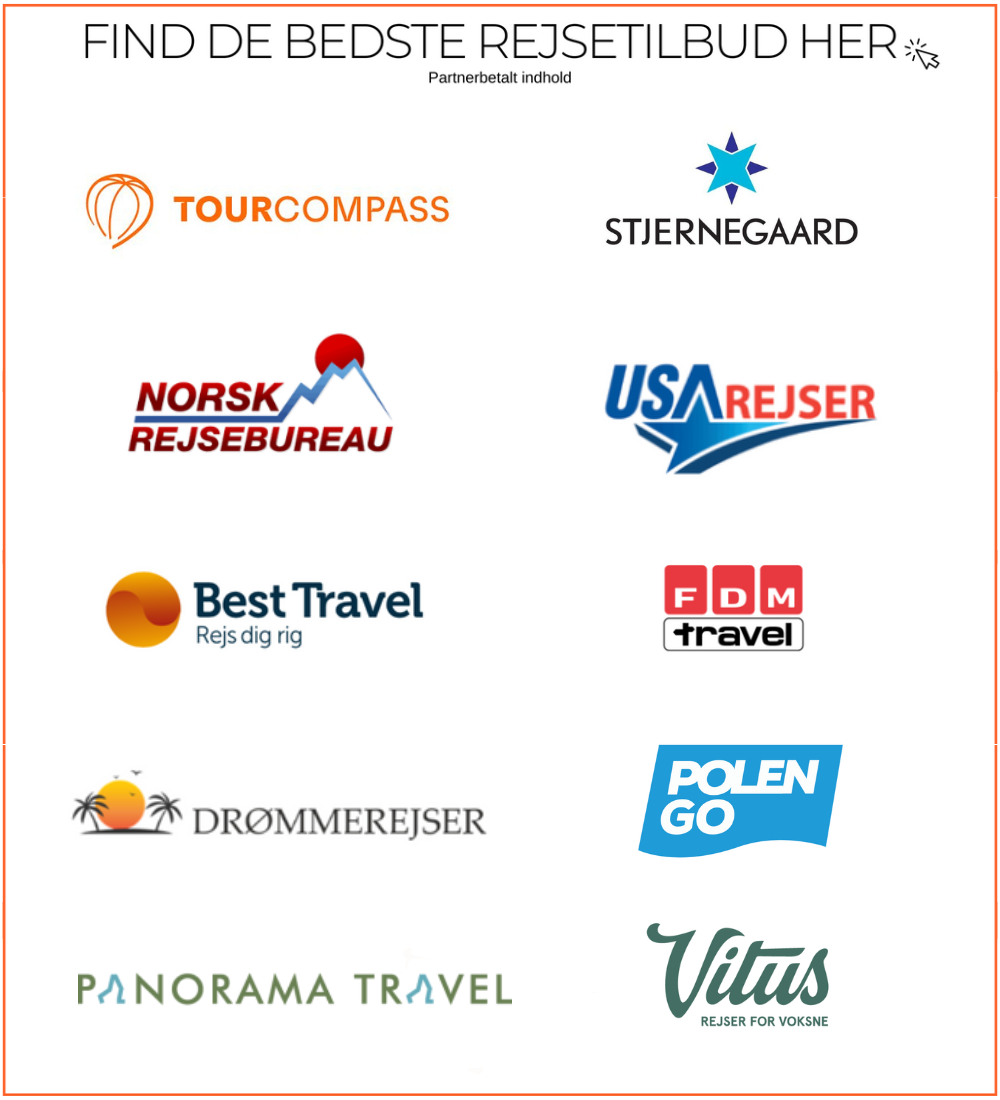Seoul: An Insider Guide to the Heart of South Korea is written by Cecilie Saustrup Kirk.

Seoul - past, present, future
South Korea's capital, Seoul, is a stunning fusion of past and future. Here, the ancient palaces, temples and traditional houses stand side by side with modern razor-sharp skyscrapers made of glass and steel.
With a fifth place on the list of the world's largest metropolitan areas - and with a population of over 24 million people - it can come as no surprise that there is plenty to see in Seoul. And that it can easily become cumbersome to pick something out.
There are, of course, sights that are obvious for a visit to Seoul. Gyeongbokgung, the largest of Seoul's ancient palaces, is one must see, and finally, do not deceive yourself for the view of Seoul from the Namsan TV Tower or 'N Seoul Tower' in English. If you are into shopping, head to Asia's largest underground shopping mall, COEX Mall, in the famous Gangnam district or the Myong-dong outdoor shopping district, which is teeming with shops.
But after living in Seoul in South Korea for half a year I found out that Korean culture is so incredibly much more than the big well-known sights. So here I have put together an insider's guide to what you can see, eat and experience in Seoul as well as some practical information for one of Asia's most incredible cities.

Seoul on rails
Whether you are looking for food, culture, fashion, music, TV series, technology, or even plastic surgery, South Korea is the country to visit. In less than three decades, South Korea has gone from being among the world's poorest countries to becoming one of the world's richest. It has led to something of a development in the infrastructure of Seoul; some parts more successful than others. My first tip therefore sounds like this. Stick to public transportation.
Seoul's subway system is extremely extensive and cheap, and with its over 330 km of train tracks, you can get pretty much anywhere by subway. There are nine main lines running in the inner city, and although it may look large and intimidating on a map, it is actually quite logically structured. At all stations there are English translations and maps of the subway, which makes it quite easy to be a tourist and get around to all the sights in Seoul.
City buses are a bit of a different story. Although the system is actually logically structured, the bus signs are only in Korean. So unless you are reading 'hangul', the Korean alphabet, buses may well be a bit of a challenge to navigate around.
Otherwise, taxis are also always an option. They are clean, neat, fully safe and for relatively cheap money compared to Denmark. The problem lies in the Korean traffic. If you were of the opinion that you had experienced bad rush hour traffic at home, then think again.
The amount of cars in the streets of Seoul is overwhelming and there always is a mile-long queue somewhere in Seoul. Many times I have experienced that it was faster to go to a destination than to be trapped in the streets of Seoul.
For the same reason, it can in no way be recommended to rent a car. The traffic is awful and let's not get into the parking options at all.
The good transport options also mean that you can easily choose which area to live in and which best suits your needs.
Hongdae is a good area if you don't want to spend too much money. It is full of cheap hostels. Gangnam with its large, luxurious hotels is good if you are looking for more luxury. Insadong is close to many of the major sights in Seoul, and Myeong-dong offers plenty of shopping opportunities.

The true Korean culture
Let yourself be transported around the subway to the famous sights of Seoul, and when you're done with them, it's time to dive a layer deeper into the real Korean culture.
If you are interested in culture, architecture and history, then a visit to the 'village' of Bukchon Hanok Village is worth it. In the middle of the city is a whole area of old traditional houses. Down small fine streets are tea houses, cultural centers and much more and looks exactly the same as it did well over 600 years ago. Highly recommended is a visit to the tea house Cha Masinuen Tteul.
Get off the subway at Anguk Station, exit exit 2 and then there is only a short walk to the street Bukchon-ro 5 na gil. With the most beautiful views of the mountains, you get the opportunity to try some of the old Korean cuisine. I even got 'jujube' tea and pumpkin cake both for 8000 won - or just over 40 kroner - each.
If you are fresh on more cafe experiences, then Seoul abounds with cafes. Here you will find everything from the modern international chains to small fine local cafés, which are reminiscent of a sidewalk café in Paris.
Seoul also excels at the special niche cafes, for example in the field of animals. A personal favorite is a cat cafe located on Sinchonnyeok-ro Street near Ewha University. The café is built and functions as a completely normal café, and the clientele is usually younger people from the four universities nearby, who come to drink coffee and read homework - surrounded by cats. I spent many afternoons at this cafe with a smoothie in hand, a book on the table and a cat in my lap.
If you are more one dog man, there is a dog café right next to Hapjeong Station; Bau House. Unlike the cat cafes, which are really just normal cafes with cats, people come to the dog cafes for the sake of the dogs. Therefore, in most places there is also a small entrance fee to enter. You can still buy food and drink here, but the vast majority grab a blanket and smoke directly on the floor to disappear into the pile of dogs.
Finally, there is also a completely unique cafe: One with sheep! It is located in Hongdae, and here at the Nature Café you can come in and visit the cutest lambs. Although all the animal cafés have separate areas where the animals can go when they have enough of us humans, the sheep are locked inside a separate room. Here you can - under the owner's supervision - be allowed to pet and feed the sheep. They come directly from the country and come in shifts to the city so it does not become too much for the little lambs.
The owner started the café because some of the little lambs were having a hard time in their flocks and he had to use an excuse to take them to work, and that's how Nature Café came to be. An ingenious solution for him and a completely unique experience for you.

Cheap with cheap on
Now that you're near Ewha University and the Hongdae area, the next obvious thing to try is the neighborhood's shopping opportunities. With four universities so close to each other, it is packed with everything the students need including cheap shopping.
Around Ewha University there is a sea of small specialty shops and the slightly larger shops. In Hongdae there is a completely underground shopping center with everything the heart desires, where the store Stylenanda can be recommended. Just get off at Hongik University station and use exit 8 or 9 - then you're practically there. Since their clientele is primarily poor students, this is where you will find some of the city's absolute best deals.
The metro stations are also a good choice for shopping as they often have underground shopping malls. Some of the best can be found at Gangnam or Jamsil stations.

Nightlife in Seoul
Once you've got your shopping cravings under control, you're already in the area with some of the best nightlife in town. I was told there were four universities just around the corner, right?
The Korean nightlife culture is quite closely associated with food, and many start an evening out by going to one of the cheap restaurants where they drink soju, the Korean version of vodka. Often you get stuck all evening, other times you manage to wriggle on to some of the clubs where you can also dance and get a larger selection of alcohol.
Do not be surprised if you find a sleeping man on the street - the drinking culture in Korea is wild. In fact, the Koreans are the people who take the most shots during the week, so it sometimes leads to the most mysterious sleeping places, you can imagine.
If the party style in Seoul in South Korea is not what you are looking for, and you are looking for more international nightlife, then my recommendation is to completely change the city and move to Itaewon - also known for the expat area. Here, the discotheques are more like something we know from Denmark and the rest of the West, and the opportunity to dance and party is much greater.
However, Itaewon is also the area where you need to keep an extra eye on your bag. Pocket thefts are almost non-existent in Korea, and when it finally happens and you report it to the police, then their first reaction is 90% of the time: "Where in Itaewon did it happen"? By this, it is actually also implied that it was most likely a foreigner who did it - not a Korean.
'Rooftop bars' are also a big thing in Itaewon, and a personal favorite is the one with the now somewhat unfortunate name Casa Corona. With a super cozy atmosphere and a great view of Seoul, you can quickly get a cozy evening to go here. The bar is close to Itaewon Station at Itaewon-dong 127-15 4F, Yongsan-gu.
If you really need to party 'Korean style', then some of the night should be spent in a 'norebang' - a karaoke room. Karaoke is taken deeply seriously in South Korea. Seriously in the fun way. Instead of appearing in public at a bar, book a room specially designed for the purpose. You can have food and alcohol delivered and sing along to international hits or South Korea's own music, K-pop.
Did you know: Here are 7 of the best local food markets in Denmark!
7: Green Market in Copenhagen
6: Eco market in Randers
Get numbers 1-5 immediately by signing up for the newsletter, and look in the welcome email:

The Korean food culture
Another thing you absolutely cannot avoid in Seoul, South Korea is food. The food culture in South Korea is an experience in itself, and if you love food, the many restaurant experiences are one of the unavoidable sights in Seoul. Kimchi is the first thing you need to know, because you're sure to come across it no matter what restaurant you go to, and it's eaten with pretty much every meal. Kimchi is fermented cabbage and vegetables in a strong chili marinade and is part of the core of Korean food culture and almost a national pride.
Kimchi is said to be incredibly healthy, but it is certainly not for everyone. For me personally, it was something of a habituation process.
There are a whole range of dining experiences you need to make sure to bring with you. It really is a list that could go on indefinitely, for the food culture is simply some of the best you can imagine. But if we were to try to limit ourselves a little, these would be my top five tips for Korean food:
Samgyupsal and bulgogi - grilled pork and marinated beef
'Samgyupsal' are grilled pork you find everywhere in Seoul and don't be put off by the fact that most of them are in a building with a tent on it. Honestly, the samgyup hall, which is made in tents at small tables with a grill in the middle that you fry your meat on, is the best samgyup hall you can find.
Maybe it's just the authentic atmosphere, maybe the meat is better - no matter what, you must not be fooled by the experience. Combined with rice, marinated vegetables, sauces and fresh lettuce leaves, samgyup hall is a wonderful feast.
Another step-yourself experience is 'bulgogi', which can be easily combined with samgyupsal. The beef is marinated, which gives it extra good taste, but otherwise the concept is the same.
Korean fried chicken - deep fried chicken
Forget everything you know about deep-fried chicken. 'Korean fried chicken' is in a league of its own and can not be compared at all with what we know from Denmark. Smaller pieces of chicken with or without bones are served with small side dishes such as vegetables. There is never a reason to order quite a lot as an accessory, because everywhere you would be offered "service" - extra side dishes without you having to pay to get it.
The chicken is what you're here for, and the side dishes are just the restaurants' way of trying to lure you back, because when they say there's a chicken restaurant on every street corner, they mean it. At the time of writing, there are 87,000 fried chicken restaurants in South Korea; that's more than McDonald's has worldwide…
Bibimbap - rice with vegetables and marinated meat
The headline on this dish is not immediately the most mind-boggling description, but 'bibimbap' is without a doubt one of my favorites. Arranged in a hot stone pot is a layer of rice, where on top is a whole work of art of colorful vegetables, marinated meat and an egg in the middle.
Bibimbap is one of the most beautiful dishes that Korean cuisine has to offer - until you stick the spoon in and stir it all together into a giant pear puree. The hot stone pot roasts the egg, and the marinade from the meat is distributed throughout the bowl, creating an unforgettable dining experience.
My favorite restaurant is just four blocks from Ewha University, and I like to come there at least once a week when I lived there. The older lady - or ajumma, as they call older women in South Korea - who own the restaurant, eventually recognized me and placed my order with the chef before I even had time to sit down.
Jiimdak - chicken, rice cakes and vegetables in soup.
'Jiimdak' is a really delicious chicken dish in a tasty soup with vegetables and 'deok'. Deok are Korean rice cakes and clearly recommendable - especially if you can find them with cheese filling. My favorite restaurant for jiimdak has unfortunately gone bankrupt in the meantime, but luckily it is a popular dish that can be found in many other places.
Hotpot - quick-cooked meat and vegetables in soup.
Hotpot actually originates from China, but is now a regular part of Korean cuisine. A pot with one or more kinds of soups is placed in the middle of the table, and from here it is actually just a matter of throwing just what you want into it. Meat, vegetables, deok - everything is welcome in the hotpot pot, and every addition just gives more flavor for the next. One of the best places is on a side street to Ewha University's main gate.
The difficulty with Korean food culture is that most of it is consumed in groups. On this list, bibimbap is the only meal that makes sense to eat alone. Are you leaving solo, the food stalls are therefore also a good choice for a quick lunch.
A personal favorite for me was the food stall just outside the gate to Ewha University. Known by me and my friends as chicken-in-a-cup-ajusshi, the elderly gentleman stood daily on the corner with his food stall with deep-fried chicken, small potato balls and deok in a strong and sweet sauce. It was possibly some of the simplest food I consumed in Seoul, South Korea, but without a doubt among the tastiest.
Another thing that is one must-try is 'tteokbokki' - deok with strong chili sauce. But if you're not for the strong, then stay far away, because when they say strong in Korea, they mean strong!
Other good food experiences are 'odeng-guk', which is compressed fish cakes, 'kimbap', which is the Korean version of sushi, 'bungeoppang', a kind of fish-shaped cakes and hotteok, which are sweet pancakes.


Nature in the big city
After all that food, most people need to stretch their legs, and a walk down the Han River is a natural choice. Here, people from all over Seoul gather and go for a walk, enjoy the air or have food delivered to the group of friends they have gathered.
Often you will find young people gathered around pizza or 'chimaek' - a classic combination of deep-fried chicken and beer, which seems to be incorporated into the Korean DNA. An obvious option if you are still walking around and are deliciously hungry.
Another obvious option for some fresh air is Seoul forest. In the middle of the city, in the district of Seongdong, there is 1200 hectares of forest area; Seoul's third largest park. Once you move into the center, you don't even realize that you are in one of the world's largest cities, and you can really enjoy the silence here. Perfect if you need a break from the sights and the fast pace of Seoul, South Korea.


Different experiences and sights in Seoul in South Korea
Seoul has lots of fun and cultural experiences and sights to offer. One of them is the 'Seoul Trick-Eye Museum. In the district of Mapo on the street Hongik-ro 3-gil you will find something that can entertain both young and old. Using weird proportions, crooked floors and the latest 3D technology, you'll have hours of fun in here by taking pictures that make it look like you're being eaten by a giant snake, caught by a dinosaur or part of celebrities paintings.
Should you have more desire to actually dress up in reality and not just as an illusion, then there are shame places for this as well. A favorite of mine is the 'Hanbok' café near Ewha University.
Having ordered coffee and cake, it also gives access to the café's large selection of traditional hanbok; the old beautiful dresses that Korean women wore 100 years ago and which are still used for weddings. A really nice experience for a small group with subsequent joint photography to immortalize the memories. Otherwise, you can also rent the dresses at the Gyeongbokgung Palace and take a walk in the old imperial palace.
Should there be more speed across the field, then the amusement park Lotte World is the thing! With the title as the world's largest indoor amusement park plus the large areas outside, you can imagine how much here is to see and experience for children and childish souls. With 'monorail', shopping malls, sports facilities, folk museum, cinemas and of course all the wild rides here is enough to tackle and you should definitely dedicate all day to it.
See the delicious luxury hotel Signiel Seoul, located right next to Lotte World here




Shop like the locals – markets in Seoul, South Korea
Finally, I must mention the Korean markets. Here we are far from chain stores and large shopping centers and instead dive into the old traditional shopping areas. The markets in Namdaemun and Dongdaemun are the biggest and best, and they are right next to each other if you wanted to see them both. And then they are a historical kick that will do something: Namdaemun can be dated all the way back to the 1400th century.
Both places are chock full of clothes, kitchen utensils, fabric, tools and food, and of course there are also a lot of restaurants scattered in between. If you love markets, this is one of the unmissable sights in Seoul.
Should you be in for a more artistic market, then the flea market in Hongdae is open every Saturday from March to September. Here, musicians and artists gather and do shows and shows as well as sell unique handmade arts and crafts - completely in spirit with the Hongdae area's creative reputation.
All in all, South Korea's capital has endless things to offer and attractions for everyone, so have a good trip to Seoul!
Read more about South Korea here


You must experience these sights in Seoul in South Korea
- Explore the Korean markets with the locals
- Try old beautiful dresses worn by Korean women 100 years ago
- The amusement park Lotte World - it is the world's largest indoor amusement park
- Visit the 'village' Bukchon Hanok Village
- The food culture in Seoul, South Korea is amazing and an experience in itself
Did you know: Here are the top 7 best nature destinations in Asia according to Booking.com's millions of users
7: Pai in northern Thailand
6: Kota Kinabalu on Borneo in Malaysia
Get numbers 1-5 immediately by signing up for the newsletter, and look in the welcome email:














































Add comment